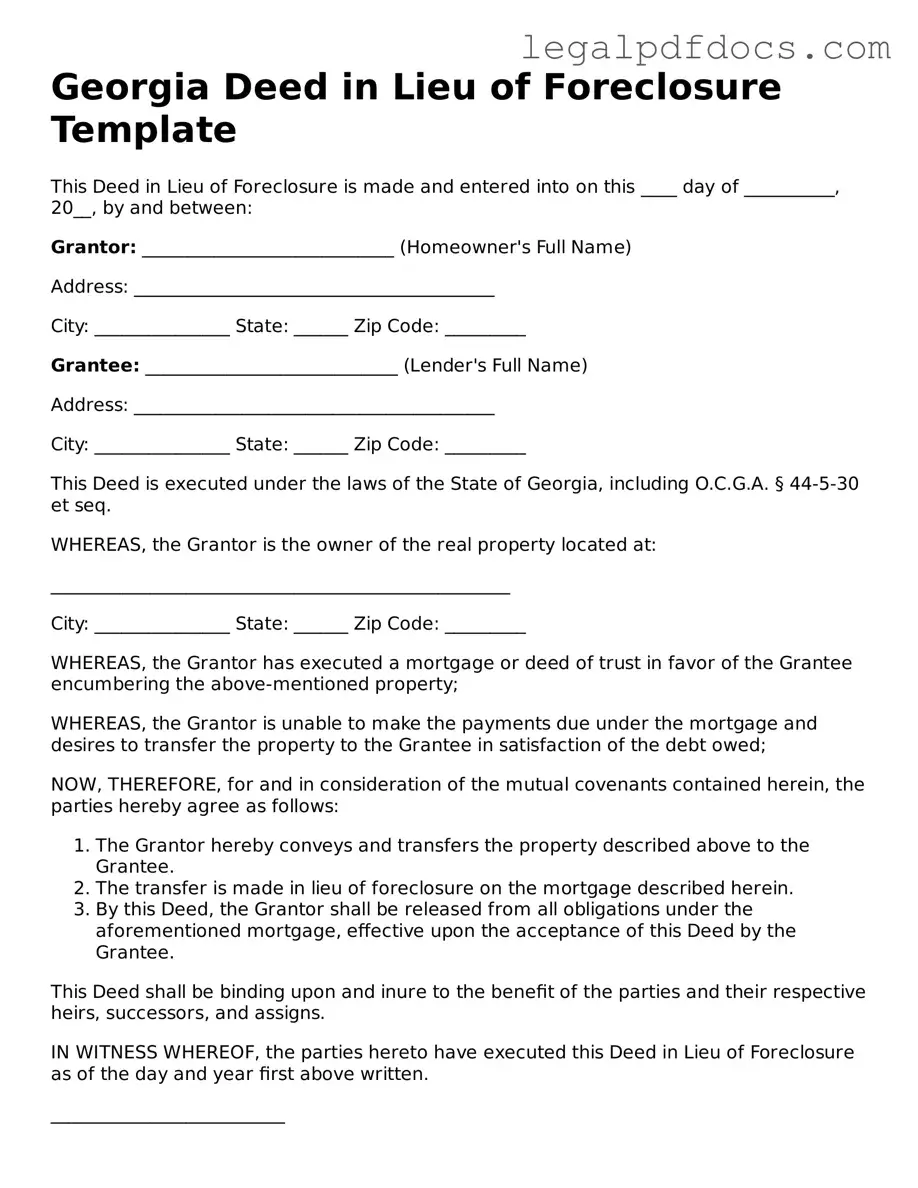In the state of Georgia, homeowners facing financial difficulties may find themselves exploring alternatives to foreclosure, and one such option is the Deed in Lieu of Foreclosure form. This legal document serves as a means for property owners to voluntarily transfer ownership of their property back to the lender, effectively avoiding the lengthy and often stressful foreclosure process. By executing this form, homeowners can mitigate the negative impact on their credit scores and potentially negotiate more favorable terms with their lender. The Deed in Lieu of Foreclosure also includes essential elements such as the identification of the parties involved, a description of the property, and any pertinent conditions or agreements that both the borrower and lender must adhere to. Understanding the implications of this form is crucial, as it can provide a pathway to financial recovery while allowing lenders to reclaim their assets without resorting to court proceedings. Overall, the Deed in Lieu of Foreclosure form represents a significant tool for those seeking to navigate the challenges of homeownership in times of economic hardship.
